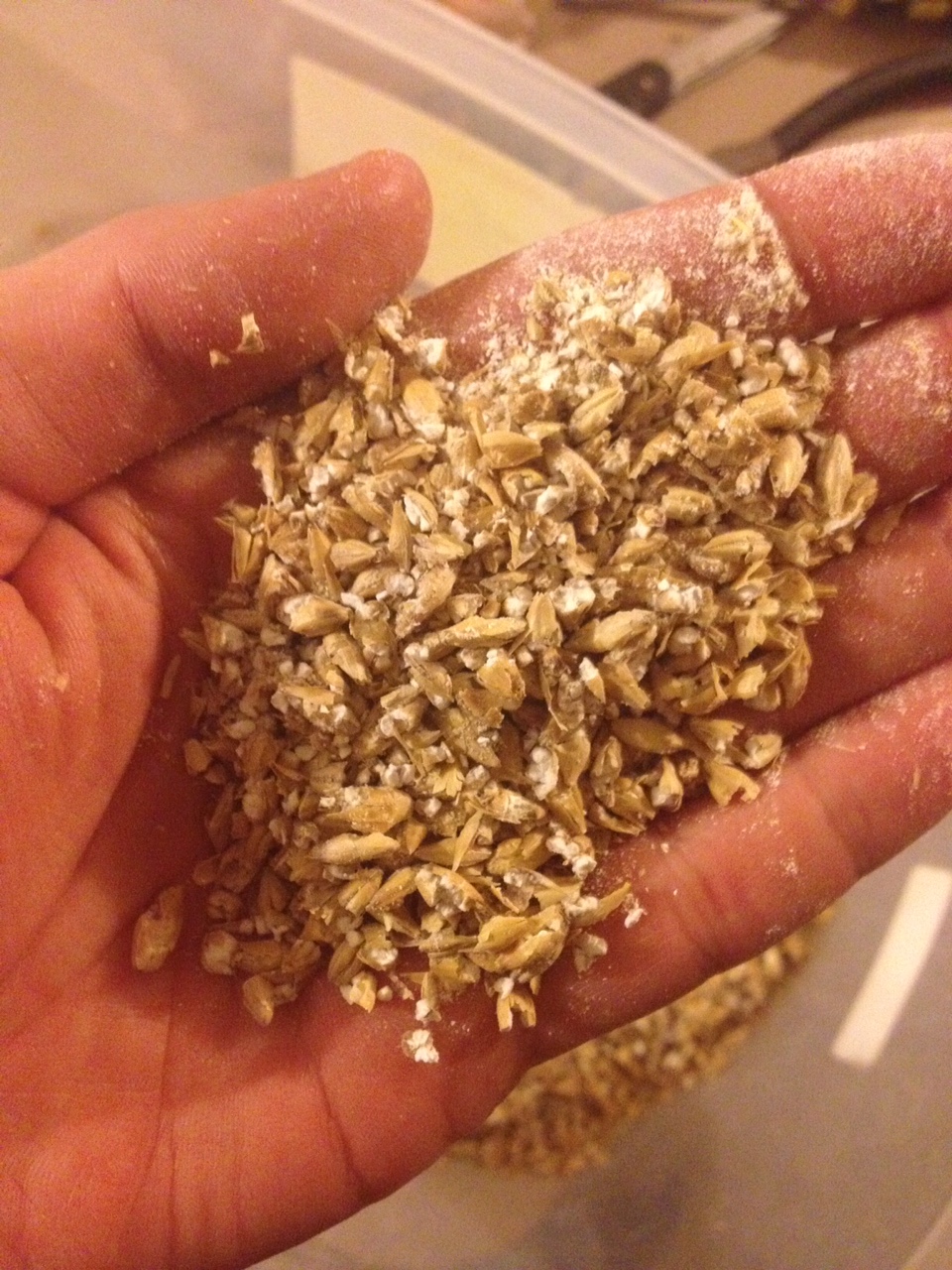After a moving cities and buying and fixing up a house over the past couple years, im finally getting back into brewing. ive brewed about 5 all grain batches and my efficiency has been around 60-65%. For a while I wasnt too worried since it was at least consistent enough that i could adjust recipes around it. I know 75% seems to be what most recipes shoot for so I wanted to try and figure out what i could do to improve it. My current set up with as much detail as i can think of:
-10 gallon rubbermaid cooler mash tun with a circular stainless steel bread with some thin copper wire coiled inside to help keep from getting a stuck mash
-8 gallon bayou classic boil kettle, 4 gallon stock kettle to heat mash/sparge water.
-2 roller grain crusher with 1/16 gap. Below is a pick of what some pilsner malt looks like after one run through.


Process used:
-Brewtoad to store and calculate recipes. I do 5 gallon batches due to using 5 gallon food grade buckets. Net beer is usually around 4.5-4.75 gallons depending on if i dry hop and how much blow off.
-Brew365 mash calculator, typically set at 1.33 qts/lb thickness. I estimate using 0.5-1 gallon extra during mashing to help hit mash/mash out temps.
-Single infusion mash around 150-155 F for an hour. Recirculate 1 gallon to vorlauf.
-Batch sparge with 1 gallon recirculated when vorlaufing. I typically stir the mash a little. I usually only get it to around 160-165 for the 10 minute mash out.
-Ive tried only opening the valve less for a slower flow the last few batches but have not noticed an improvement in efficiency.
Anything else I can look into? Can provide other info upon request. Was hoping to get a nice tax refund and maybe put it towards a Grandfather, but instead uncle sam took at $250 bite out of my ass.
-10 gallon rubbermaid cooler mash tun with a circular stainless steel bread with some thin copper wire coiled inside to help keep from getting a stuck mash
-8 gallon bayou classic boil kettle, 4 gallon stock kettle to heat mash/sparge water.
-2 roller grain crusher with 1/16 gap. Below is a pick of what some pilsner malt looks like after one run through.


Process used:
-Brewtoad to store and calculate recipes. I do 5 gallon batches due to using 5 gallon food grade buckets. Net beer is usually around 4.5-4.75 gallons depending on if i dry hop and how much blow off.
-Brew365 mash calculator, typically set at 1.33 qts/lb thickness. I estimate using 0.5-1 gallon extra during mashing to help hit mash/mash out temps.
-Single infusion mash around 150-155 F for an hour. Recirculate 1 gallon to vorlauf.
-Batch sparge with 1 gallon recirculated when vorlaufing. I typically stir the mash a little. I usually only get it to around 160-165 for the 10 minute mash out.
-Ive tried only opening the valve less for a slower flow the last few batches but have not noticed an improvement in efficiency.
Anything else I can look into? Can provide other info upon request. Was hoping to get a nice tax refund and maybe put it towards a Grandfather, but instead uncle sam took at $250 bite out of my ass.





















































![Craft A Brew - Safale S-04 Dry Yeast - Fermentis - English Ale Dry Yeast - For English and American Ales and Hard Apple Ciders - Ingredients for Home Brewing - Beer Making Supplies - [1 Pack]](https://m.media-amazon.com/images/I/41fVGNh6JfL._SL500_.jpg)



